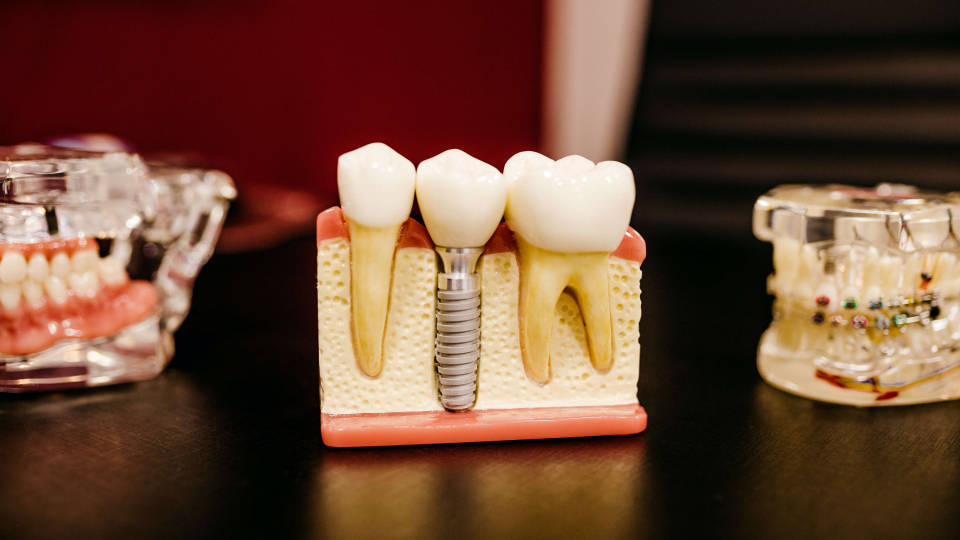Dental implants are an outstanding solution for tooth loss in contemporary dentistry. They have been taking the lead in the dentistry world by offering excellent aesthetic results and high performance.
However, their success and marvelous features are thanks to the careful process behind them.
What is the Dental Implant Process?
Like other dental restorations, dental implant procedures require various logical steps to achieve the final result. With implant dentistry, these steps are particularly relevant due to the surgical nature of the process.
Thereby, to avoid complications and guarantee a safe, accurate, and predictable procedure, the specialist must perform the following steps:
First phase: The evaluation process for dental implants
This process includes all the screening and specific tests that clinicians might require to gather all the information needed for the procedure.
During this step, the specialist will perform a complete and rigorous clinical evaluation to evaluate the state of your teeth and mouth tissues. Additionally, the professional will carry a thoughtful medical history, searching for systemic conditions that could hinder the procedure.
Most times, dental implant evaluation requires multiple x-rays, photographs, blood tests, and sometimes a tomography. With this, your dentist can measure your bone quality and locate essential structures. As a result, the clinician can have a clear picture of your condition and general state.
Second phase: the planning of dental implants
Although it can sound like an inherent part of the process, planning is an essential part of dental implant placement. Actually, dental implants’ success is thanks to the hard work put into the first two stages.
During this step, your dentist will use all the information obtained during the evaluation to build a customized, efficient, and safe surgical protocol. Hence, with the appropriate plan, the team can reduce surgical times, increase accuracy, and decrease the risk of complications.
Furthermore, the professional selects the adequate dental implant that you require, manufactures customized guides, and showcase the final results digitally.
Finally, planning is crucial to create a strong relationship with the prosthetist to make a flawless final prosthesis restoration.
Third phase: the dental implant surgical procedure
The dental implants surgical procedure is a safe and controlled surgery that requires well-prepared and knowledgeable professionals.
In a nutshell, the procedure consists of the following steps:
- The dentist uses local or general anesthesia, guaranteeing a painless surgery.
- The soft tissues and gums are separated from the bone to avoid damage.
- The clinician prepares the bone with specialized instruments and equipment.
- Then, he places and inserts the implant in the correct position and angle, using multiple tools and guides.
- Finally, he set a healing cap and puts back the soft tissues over the implants, finishing with some stitches.
The recovery is a fast process and, after a few weeks, the team performs a new final short surgery to place a healing abutment to provide a final perfect fit.
Fourth stage: the final restoration
With the implant secured and healed, the team can place the new prosthesis that will allow you to eat and look like natural teeth.
REFERENCES:
Albrektsson, T., Brånemark, P. I., Hansson, H. A., & Lindström, J. (1981). Osseointegrated titanium implants: Requirements for ensuring a long-lasting, direct bone-to-implant anchorage in man. Acta Orthopaedica. https://doi.org/10.3109/17453678108991776
Engelman, M. J., Sorensen, J. A., & Moy, P. (1988). Optimum placement of osseointegrated implants. The Journal of Prosthetic Dentistry. https://doi.org/10.1016/0022-3913(88)90044-3
Hong, D. G. K., & Oh, J. (2017). Recent advances in dental implants. Maxillofacial Plastic and Reconstructive Surgery. https://doi.org/10.1186/s40902-017-0132-2
Nelson, C. (2011). Factors Affecting the Success of Dental Implants. In Implant Dentistry – A Rapidly Evolving Practice. https://doi.org/10.5772/18746
van Steenberghe, D., Lekholm, U., Bolender, C., Folmer, T., Henry, P., Herrmann, I., Higuchi, K., Laney, W., Linden, U., & Astrand, P. (1990). Applicability of osseointegrated oral implants in the rehabilitation of partial edentulism: a prospective multicenter study on 558 fixtures. The International Journal of Oral & Maxillofacial Implants.
Article originally published at yournewteethnow.com.

